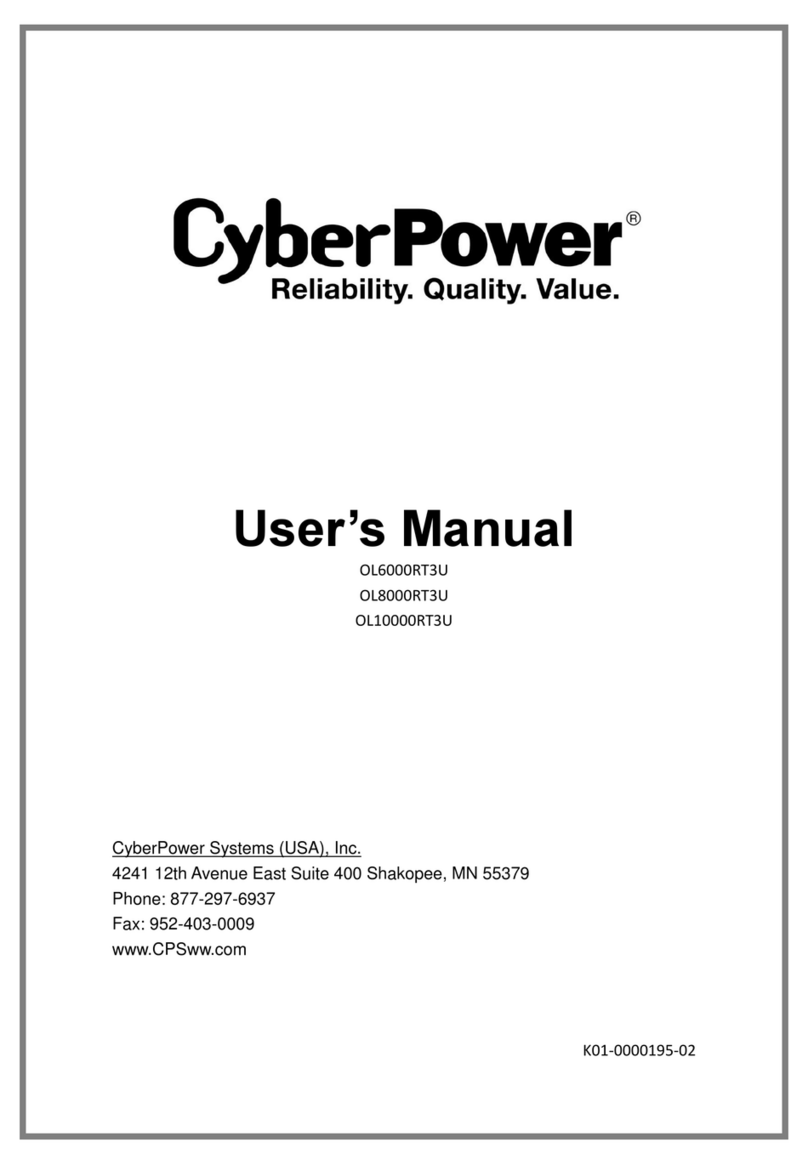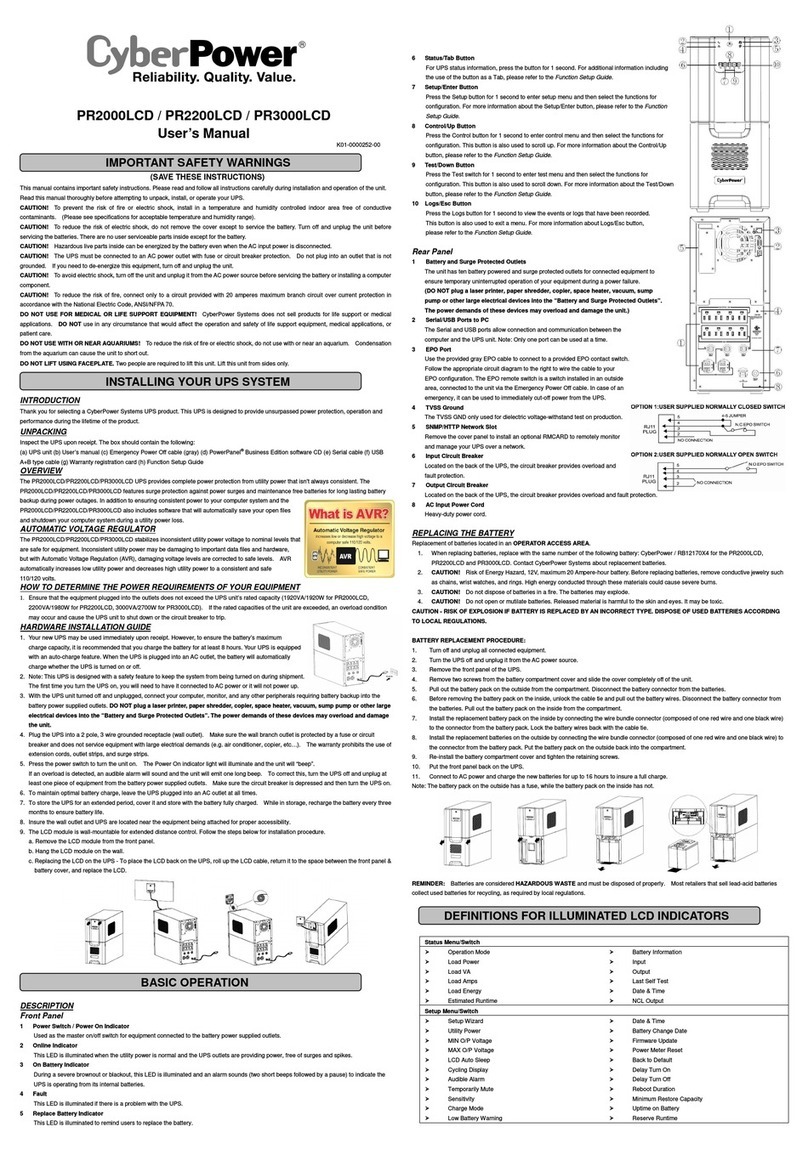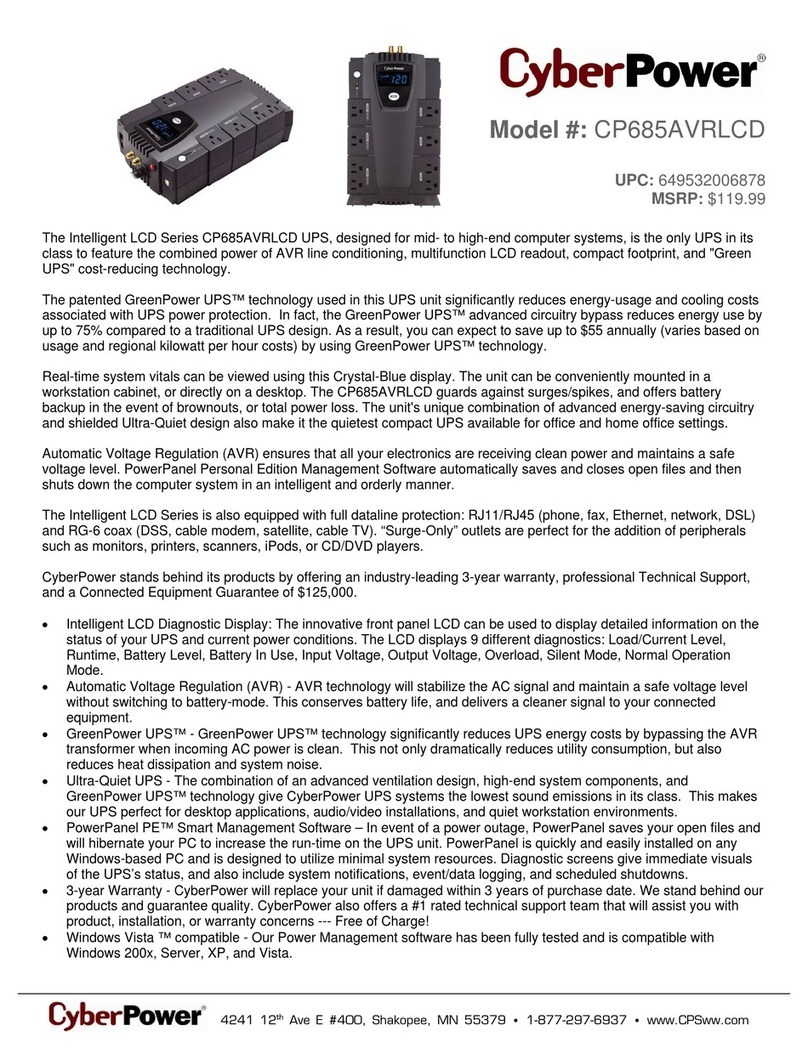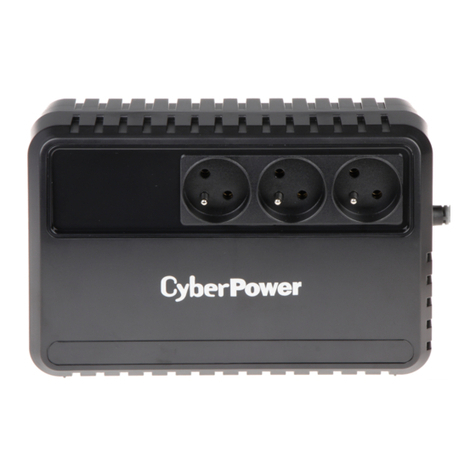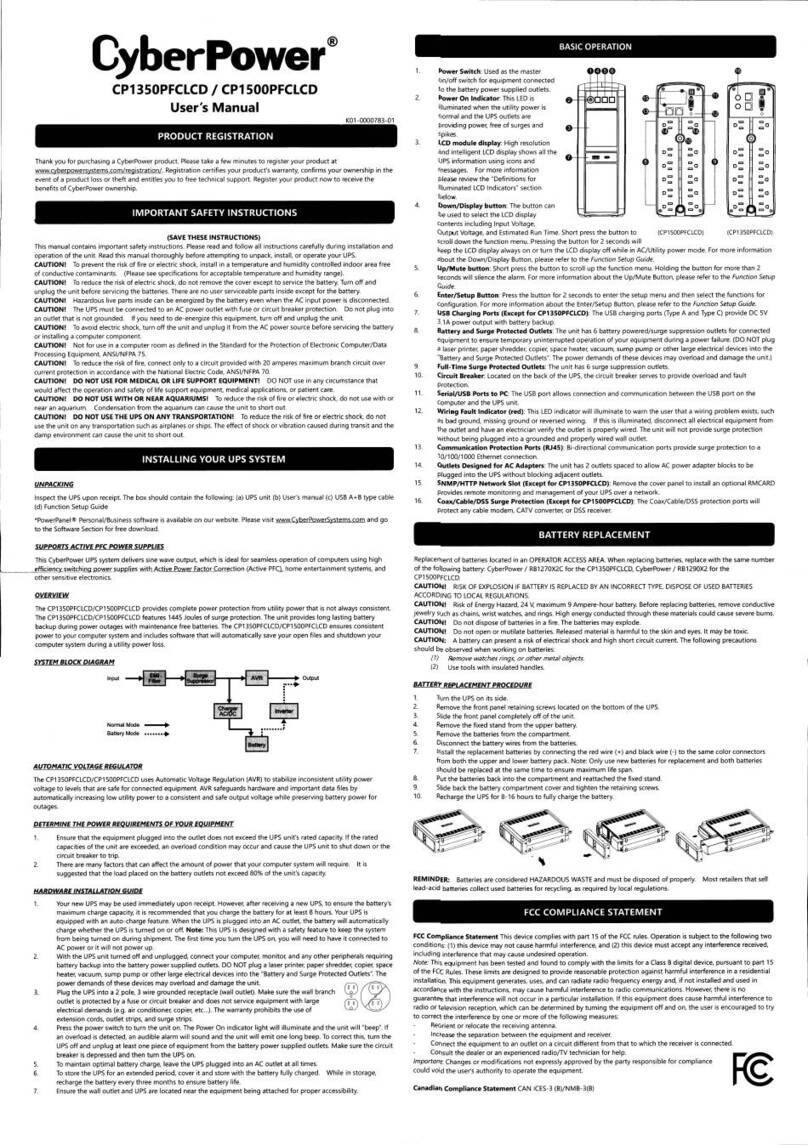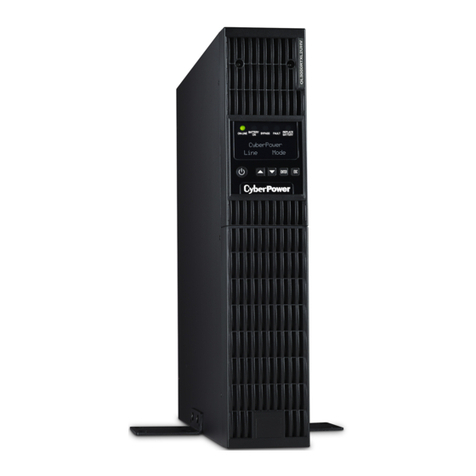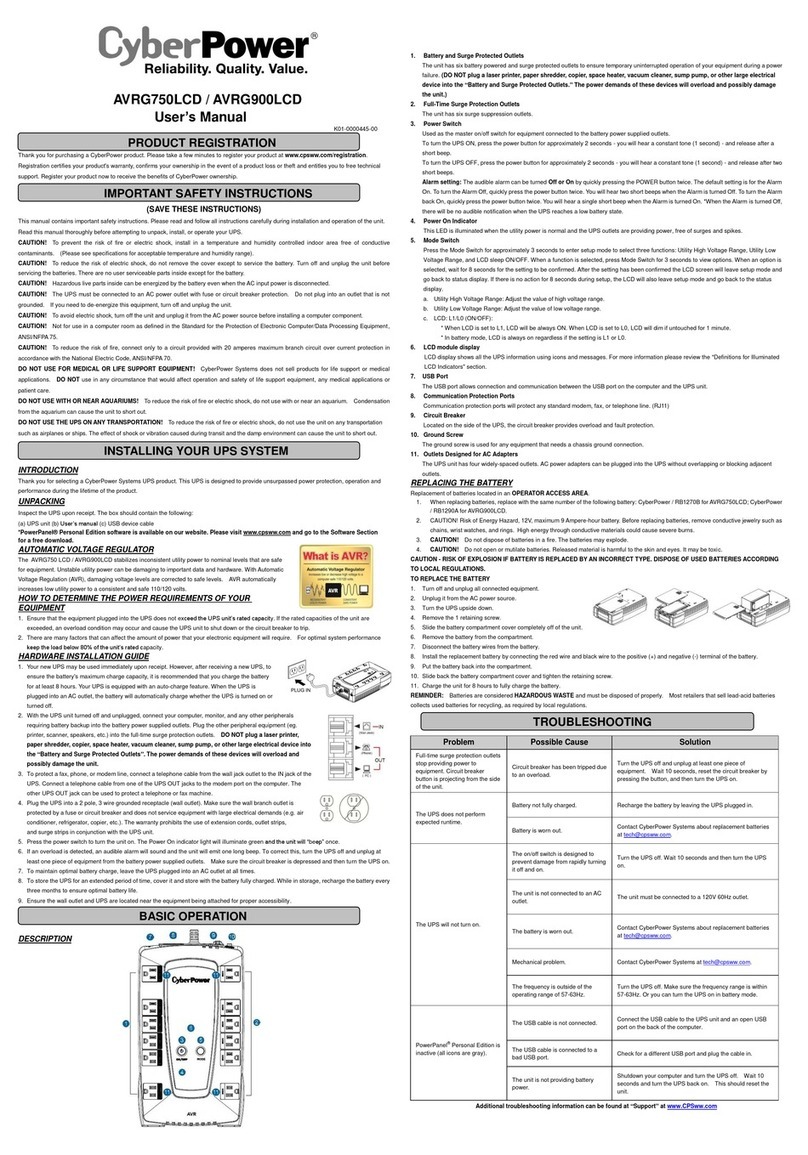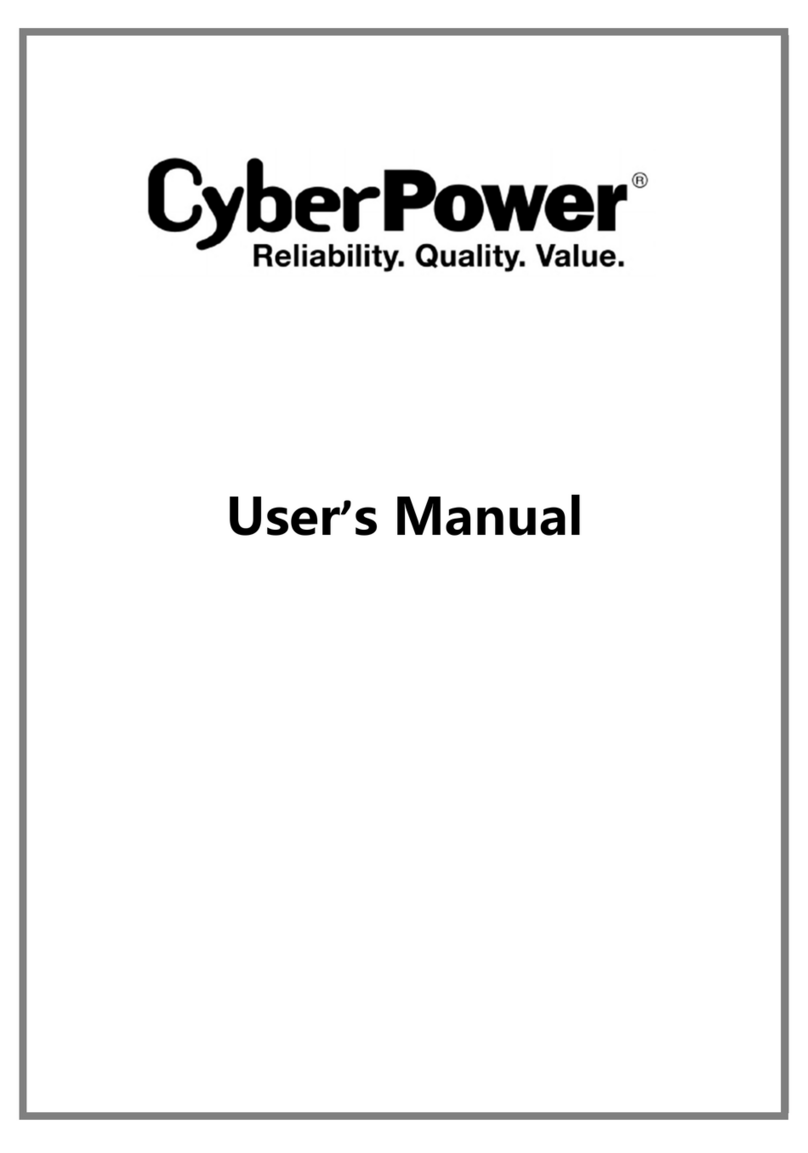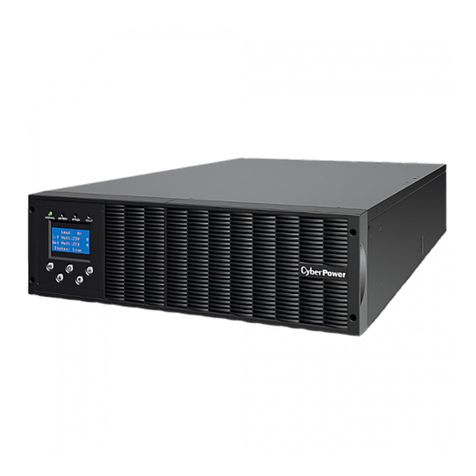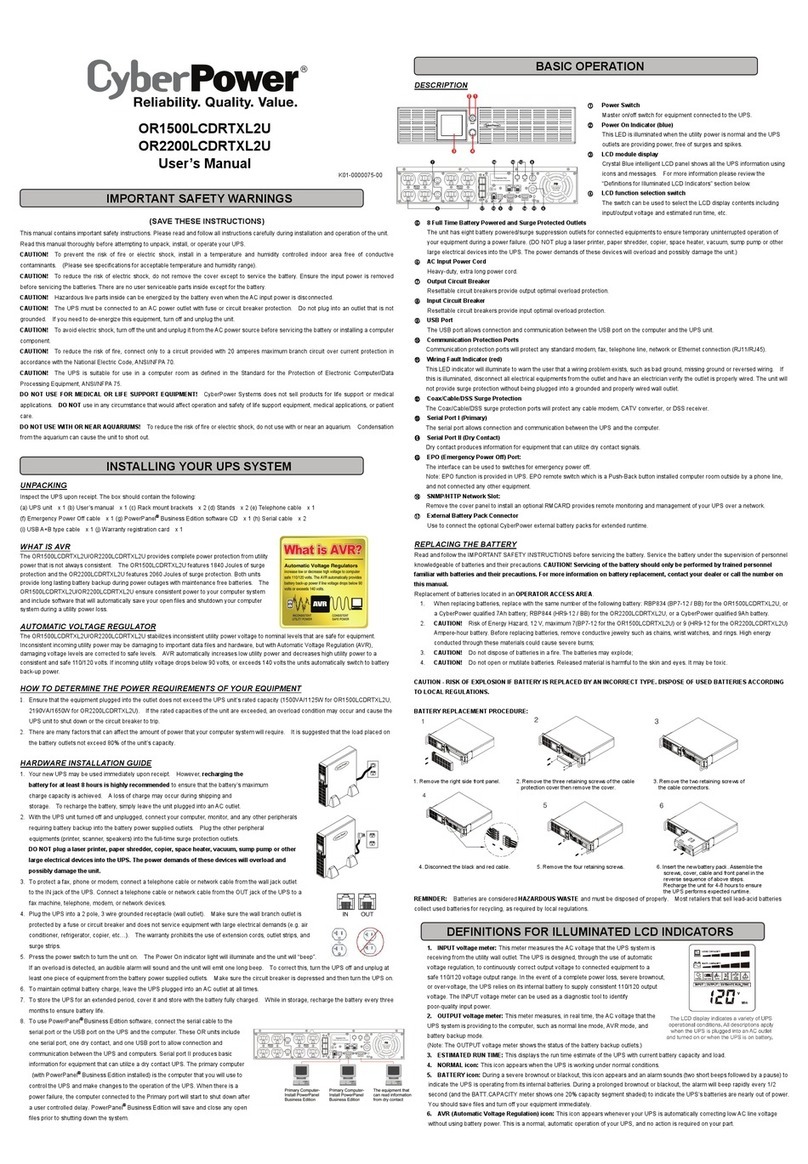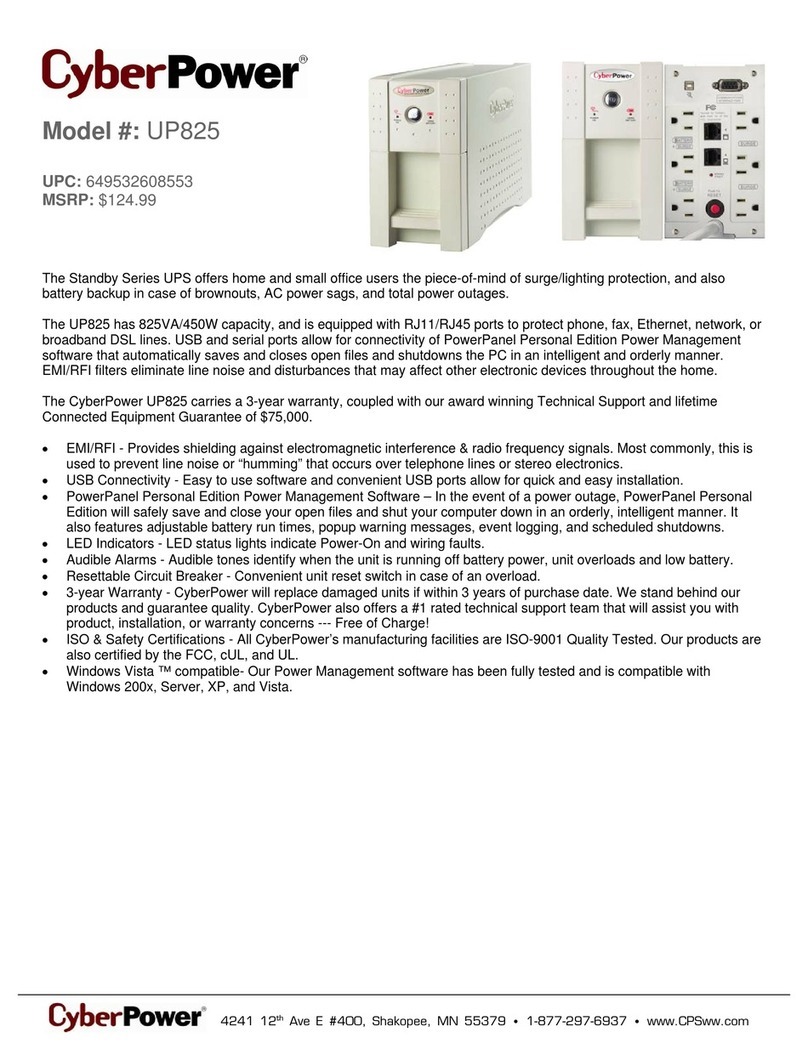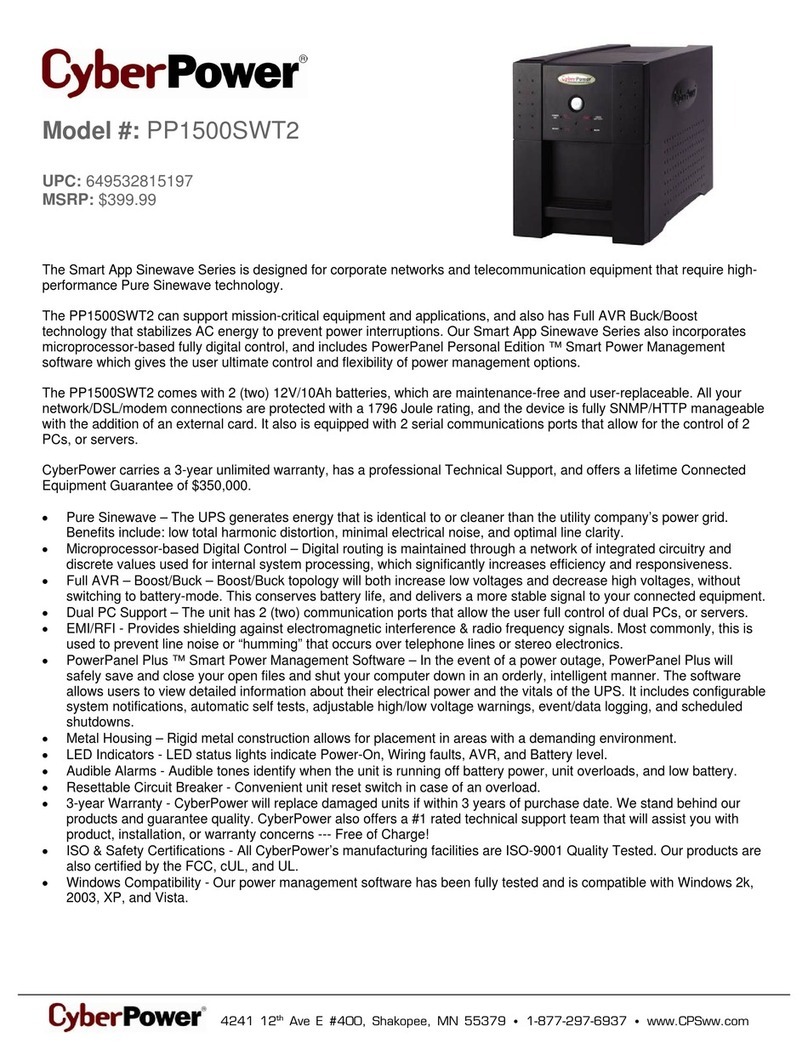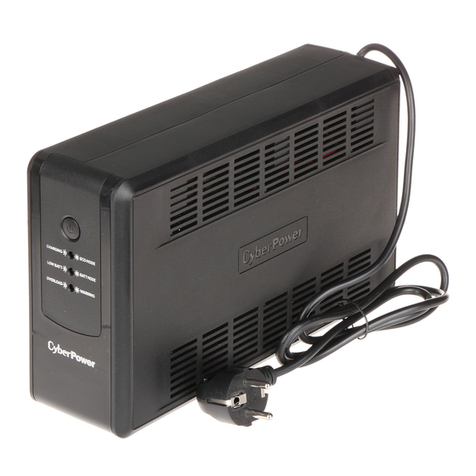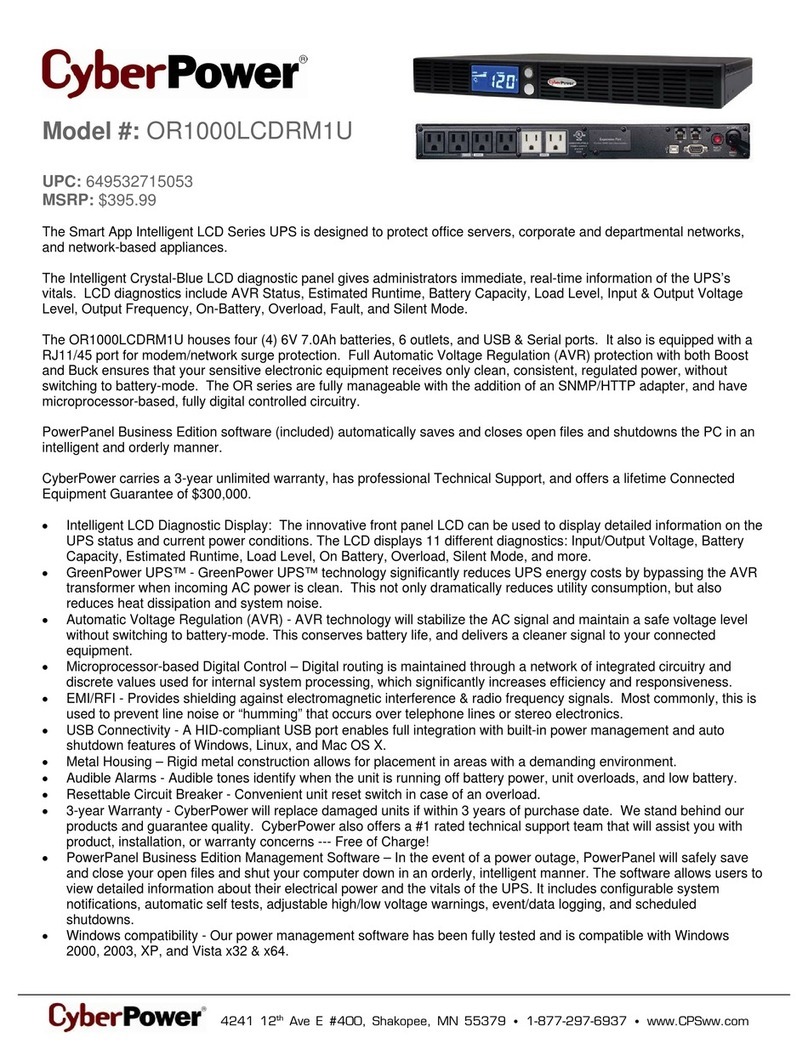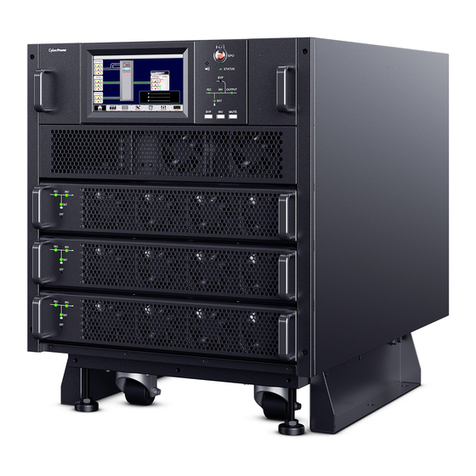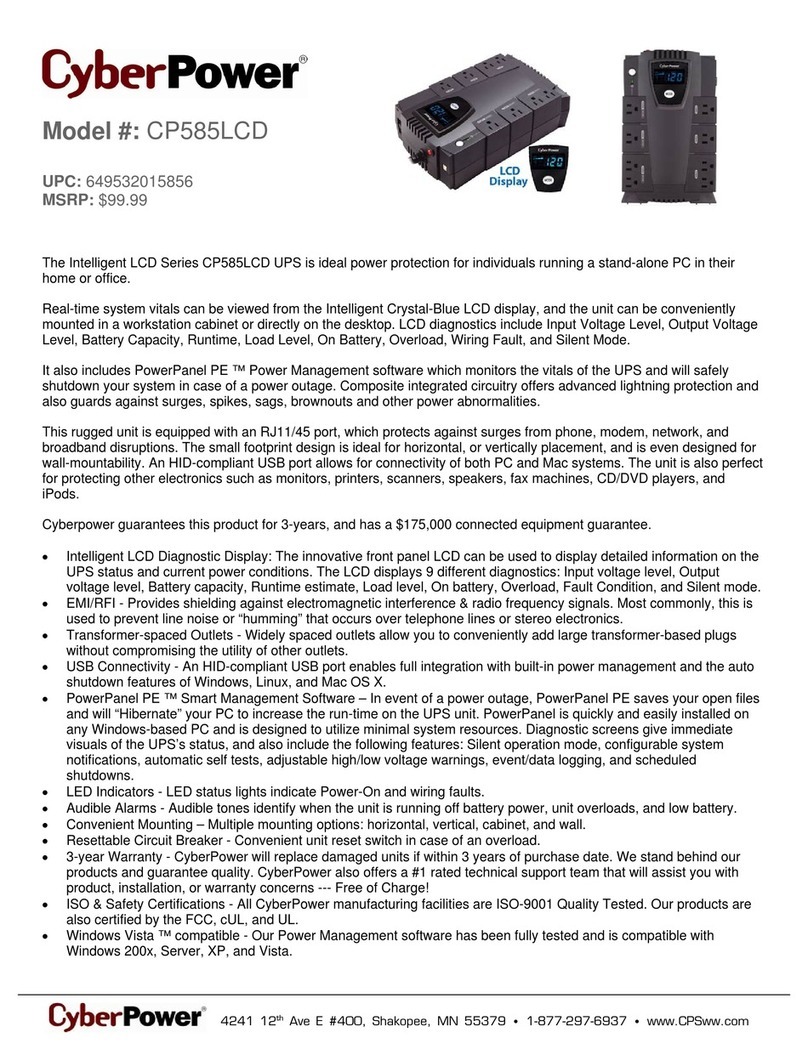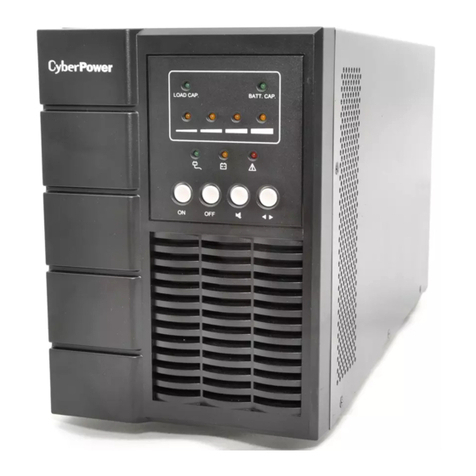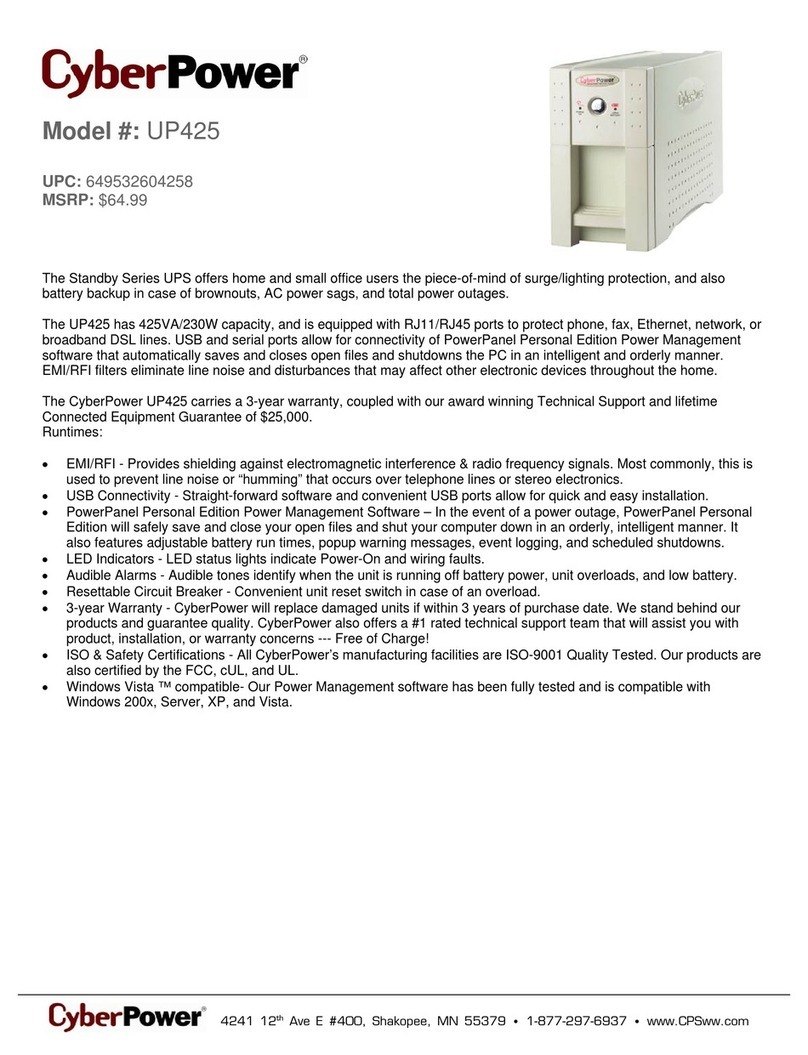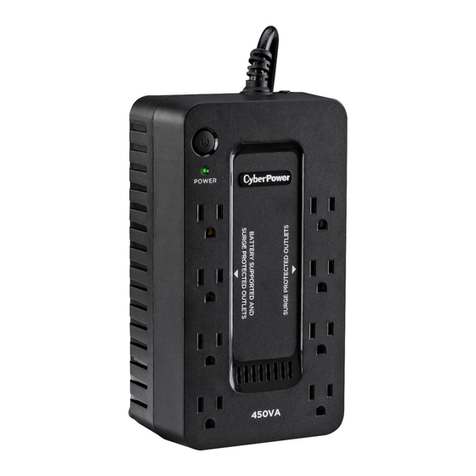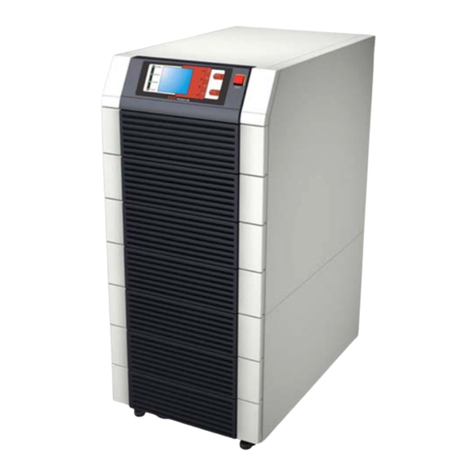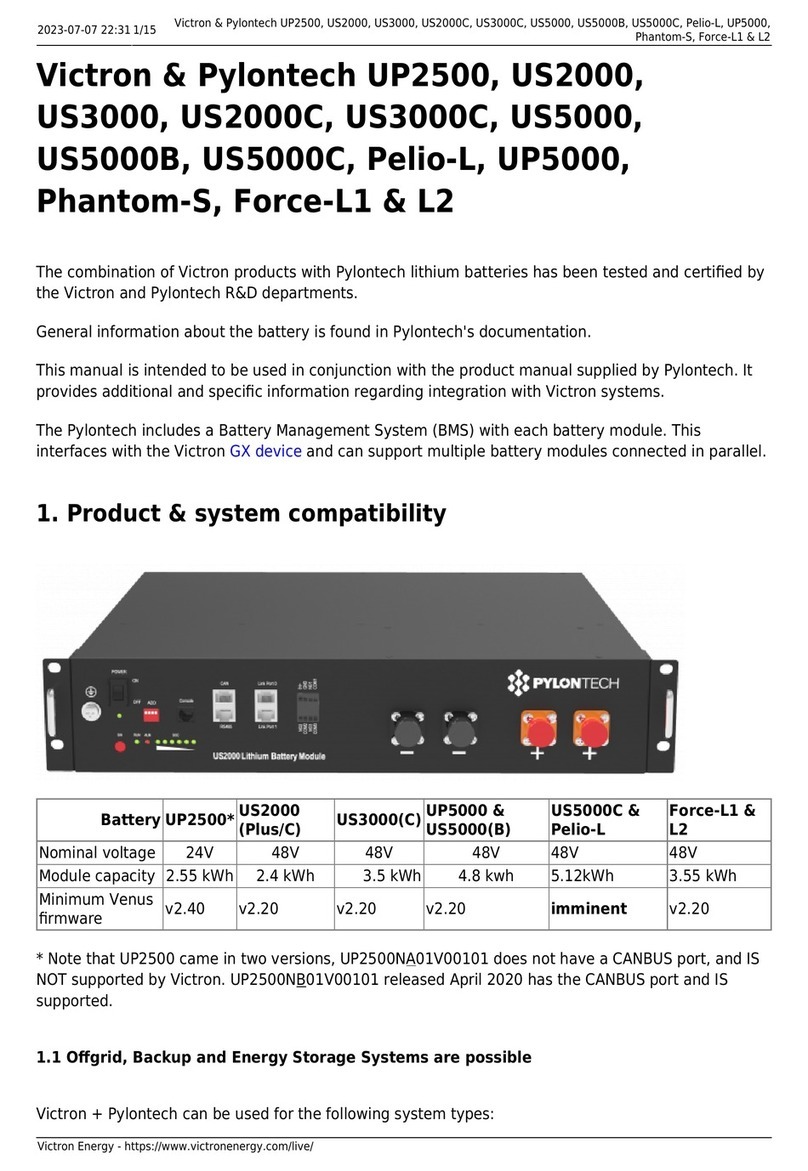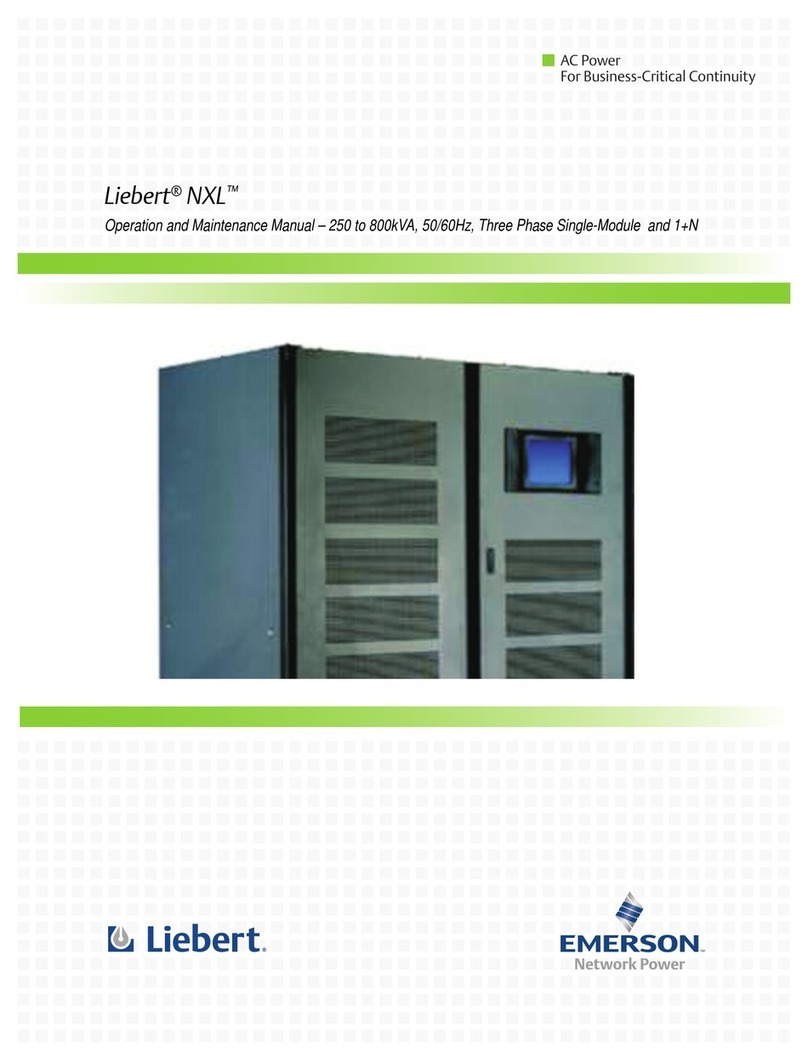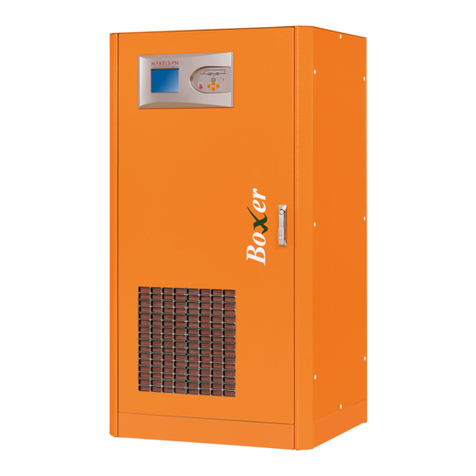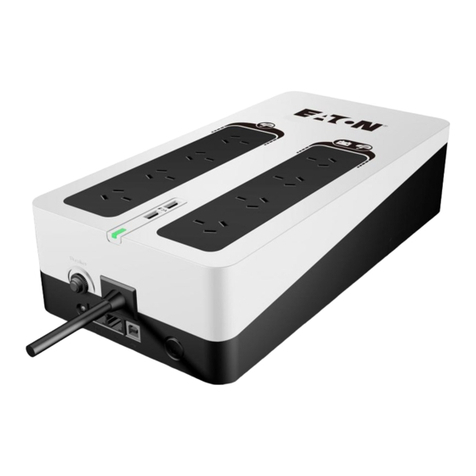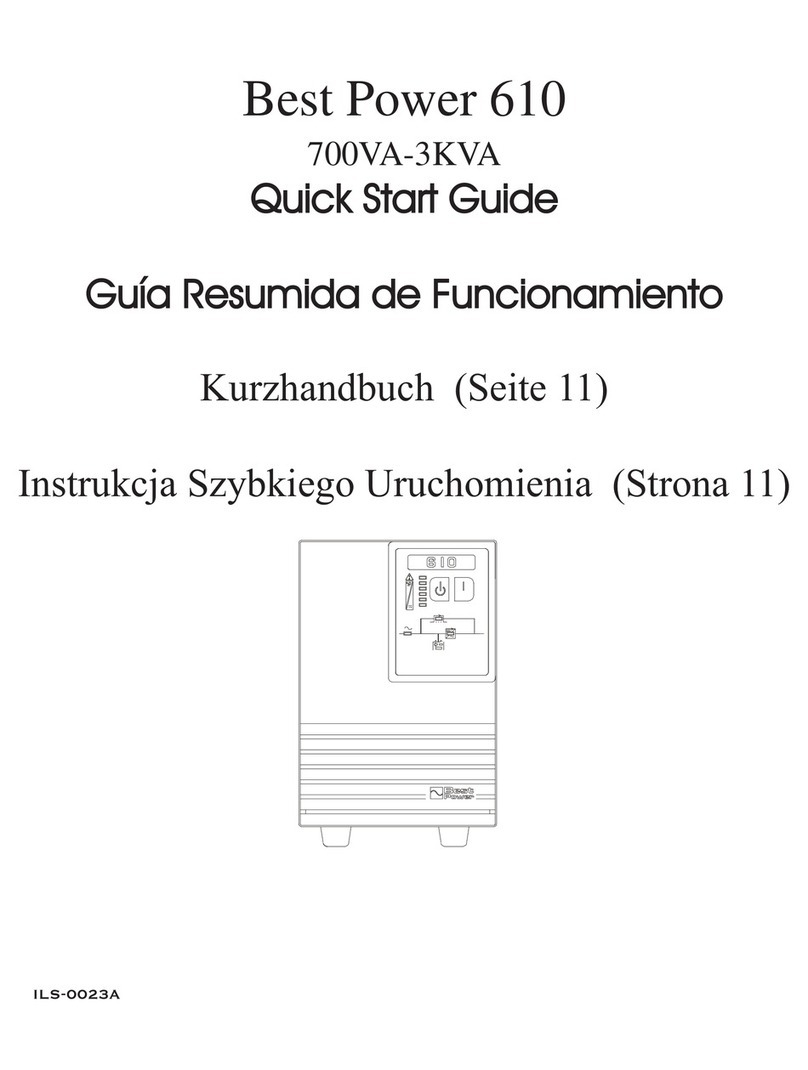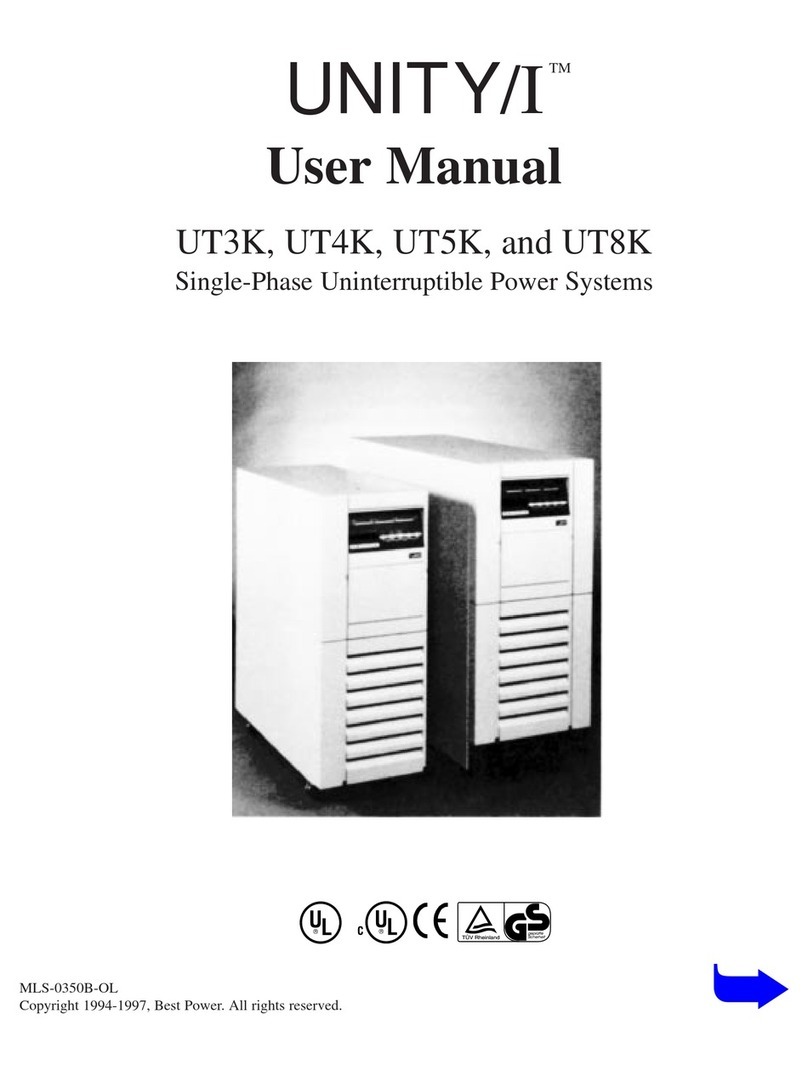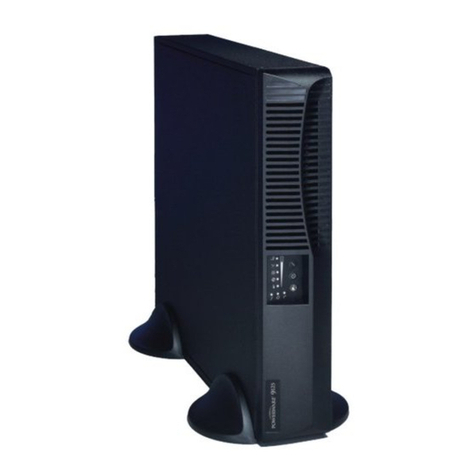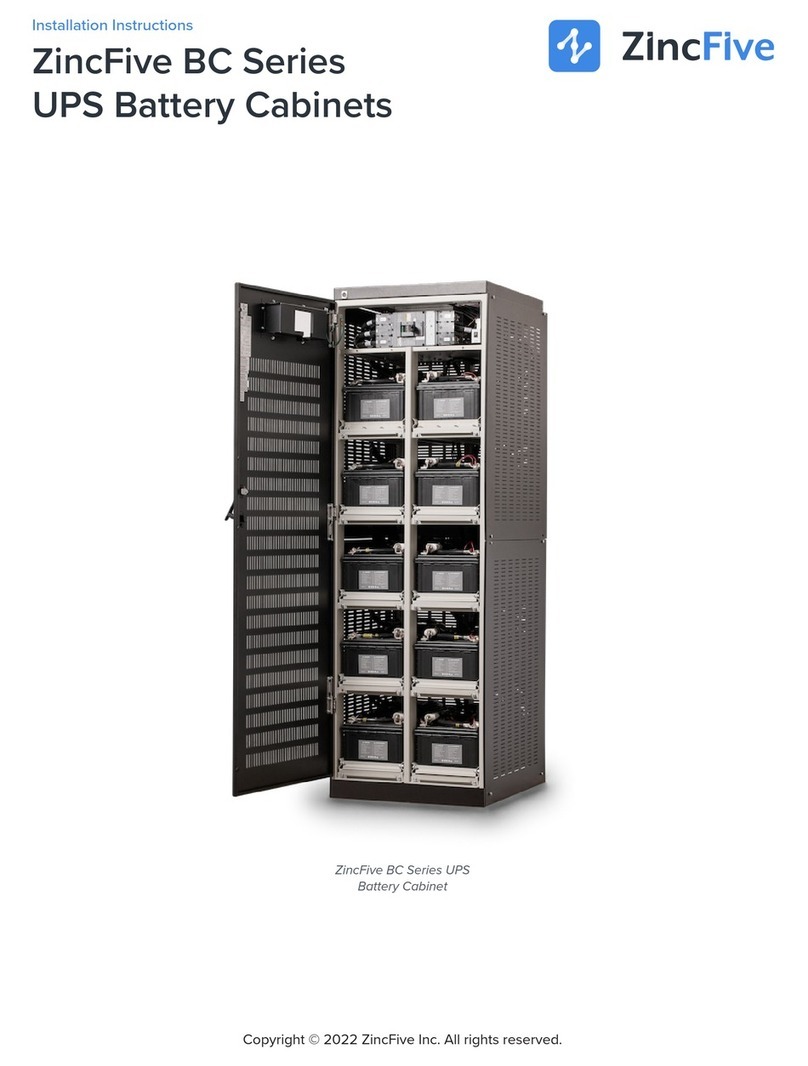(SAVE THESE INSTRUCTIONS)
This manual contains important instructions that should be followed during installation and maintenance of
the UPS and batteries.
CAUTION! To prevent the risk of fire or electric shock, install in a temperature and humidity controlled
indoor area free of conductive contaminants. (Please see specifications for acceptable temperature and
humidity range).
CAUTION! To reduce the risk of electric shock, do not remove the cover except to service the battery.
There are no user serviceable parts inside, except for thebattery.
CAUTION! Hazardous live parts inside can be energized by the battery even when the AC input power is
disconnected.
CAUTION! The UPS must be connected to an grounded AC power outlet with fuse or circuit breaker
protection. Do not plug into an outlet that is not grounded. If you need to de-energize this equipment, turn off
and unplug the unit.
CAUTION! To avoid electrical shock, turn off the unit and unplug it form the AC power source before
servicing the battery or installing a computer component.
CAUTION! Do not dispose of batteries in a fire. The batteries may explode.
CAUTION! Do not open or mutilate batteries. Released electrolyte is harmful to the skin and eyes. It may
be toxic.
DO NOT USE FOR MEDICAL OR LIFE SUPPORT EQUIPMENT! CyberPower Systems does not sell
products for life support or medical applications. DO NOT use in any circumstance that would affect
operation and safety of life support equipment, any medical applications or patient care.
DO NOT USE WITH OR NEAR AQUARIUMS! To reduce the risk of fire or electric shock, do not use with
or near an aquarium. Condensation from the aquarium can cause the unit to short out.
DO NOT USE THE UPS ON ANY TRANSPORTATION! To reduce the risk of fire or electric shock, do not
use the unit on any transportation such as airplanes or ships. The effect of shock or vibration caused during
transit and the damp environment can cause the unit to short out.
UNPACKING
Inspect the UPS upon receipt. The box should contain the following:
(a) UPS unit (b) User’s manual (c) USB device cable (d) IEC to IEC power cord
*PowerPanel® Personal Edition software is available on our website. Please visit
www.cyberpower.com and go to the Software Section for free download.
HOW TO DETERMINE THE POWER REQUIREMENTS OF YOUR EQUIPMENT
1. Ensure that the equipment plugged into the UPS does not exceed the UPS unit’s rated capacity
(650VA/400W for RT650EI and 500VA/300W for RT500EI). If the rated capacities of the unit are
exceeded, an overload condition may occur and cause the UPS unit to shut down or the circuit breaker to
trip.
2. There are many factors that can affect the amount of power that your electronic equipment will require.
For optimal system performance keep the load below 80% of the unit’s rated capacity.
DESCRIPTION
1. LED Indicators
The LED indicators will illuminate to show the status of power: on line, on battery, overload, replace
battery.
2. Power Switch
To turn the UPS ON, press the power button for approximately 2 seconds - you will hear a constant tone
and release after a short beep.
To turn the UPS OFF, press the power button for approximately 2 seconds - you will hear a constant
tone and release after two short beeps.
Mute mode: The audible alarm can be turned Off or On by quickly pressing the POWER button twice.
The default setting is for the Alarm On. To turn the Alarm Off, quickly press the power button twice. You
will hear two short beeps when the Alarm is turned Off. To turn the Alarm back On, quickly press the
power button twice. You will hear a single short beep when the Alarm is turned On. *When the Alarm is
turned Off, there will be no audible notification when the UPS goes to Battery mode or reaches a low
battery state.
3. Communication Protection Ports
Communication protection ports will protect any standard modem, fax, telephone line, network or
Ethernet connection (RJ11/RJ45).
4. USB Port to PC
The USB port allows connection and communication between the USB port on the computer and the
UPS unit. The UPS communicates its status to the PowerPanel®Personal Edition software.
5. Communication Port to PC
This port allows connection and communication between the UPS and computer. The UPS
communicates its status to the PowerPanel®Personal Edition software. For information regarding
ordering a serial cable for the unit, please contact technical support at CyberPower System.
NOTE: Only one of communication port and USB port can be used as communication and control of the
UPS unit at one time.
6. Battery and Surge Protected Outlets
The unit has battery powered/surge suppression outlets to ensure temporary uninterrupted operation of
your equipment during a power failure. (DO NOT plug a laser printer, paper shredder, copier, space
heater, vacuum cleaner, sump pump, or other large electrical device into the “Battery and Surge
Protected Outlets.”The power demands of these devices will overload and possibly damage the
unit.)
7. Circuit Breaker
Located on the back of the UPS, the circuit breaker serves to provide overload and fault protection.
8. AC Input
Connect the AC Power cord to a properly wired and grounded outlet.
1. Your new UPS may be used immediately upon receipt. However, after receiving a new UPS, to ensure
the battery’s maximum charge capacity, it is recommended that you charge the battery for at least 8
hours. Your UPS is equipped with an auto-charge feature. When the UPS is plugged into an AC outlet,
the battery will automatically charge when it’s turned on or turned off.
Note: This UPS is designed with a safety feature to keep the system from being turned on during
shipment. The first time you turn the UPS on, you will need to have it connected to AC power or it
will not power up.
2. With the UPS unit turned off and unplugged, connect your computer, monitor, and any other peripherals
requiring battery backup from the SURGE & BATTERY outlets. DO NOT plug a laser printer, paper
shredder, copier, space heater, vacuum cleaner, sump pump, or other large electrical device into
the “Battery and Surge Protected Outlets”. The power demands of these devices will overload
and possibly damage the unit.
3. To protect a fax, phone, or modem line, connect a telephone cable from the wall jack outlet to the IN jack
of the UPS. Connect a telephone cable from the UPS OUT jack to protect a modem port on the computer,
a telephone, or fax machine.
4. Plug the UPS into a 2 pole, 3 wire grounded receptacle (wall outlet). Make sure the wall branch outlet is
protected by a fuse or circuit breaker and does not service equipment with large electrical demands (e.g.
air conditioner, refrigerator, copier, etc.). The warranty prohibits the use of extension cords, outlet strips,
and surge strips in conjunction with the UPS unit.
5. If an overload is detected, an audible alarm will sound and the unit will emit one long beep. To correct this,
turn the UPS off and unplug at least one piece of equipment from the battery power supplied outlets.
Make sure the circuit breaker is depressed and then turn the UPS on.
6. To maintain optimal battery charge, leave the UPS plugged into an AC outlet at all times.
7. To store the UPS for an extended period of time, cover it and store with the battery fully charged. While in
storage, recharge the battery every three months to ensure optimal battery life.
8. Ensure the wall outlet and UPS are located near the equipment being attached for
proper accessibility.
9. The UPS can lie down on the left direction during operation. DO NOT lie down on
the other side which may block the ventilation hole and hinder the heat dissipation.
CAUTION! Read and follow the IMPORTANT SAFETY INSTRUCTIONS before servicing the battery.
Service the battery under the supervision of personnel knowledgeable of batteries and their
precautions.
CAUTION! Use only the specified type of battery. See your dealer for replacement batteries.
CAUTION! The battery may present the risk of electrical shock. Do not dispose of batteries in a fire, as they
may explode. Follow all local ordinances regarding proper disposal of batteries.
CAUTION! Do not open or mutilate the batteries. Released electrolyte is harmful to the skin and eyes and
may be toxic.
CAUTION! A battery can present a high risk of short circuit current and electrical shock. Take the following
precautions before replacing the battery:
1. Remove all watches, rings or other metal objects.
2. Only use tools with insulated handles.
3. DO NOT lay tools or other metal parts on top of battery or any battery terminals.
4. Wear rubber gloves and boots.
5. Determine if the battery is inadvertently grounded. If inadvertently grounded, remove source of ground.
CONTACT WITH A GROUNDED BATTERY CAN RESULT IN ELECTRICAL SHOCK! The likelihood of
such shock will be reduced if such grounds are removed during installation and maintenance (applicable to a
UPS and a remote battery supply not having a grounded circuit)
TO REPLACE THE BATTERY
1. Turn off and unplug all connected equipment.
2. Unplug it from the AC power source.
3. Turn the UPS on its side.
4. Remove the retaining screw.
5. Slide the battery compartment cover completely off of the unit.
6. Remove the battery from the compartment.
7. Disconnect the battery wires from the battery.
8. Install the replacement battery by connecting the red wire and black wire to the positive (+) and
negative (-) terminal of the battery.
9. Put the battery back into the compartment.
10. Slide back the battery compartment cover and tighten the retaining screw.
11. Charge the unit for 8 hours to fully charge the battery.
